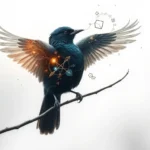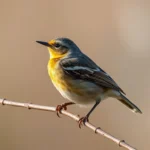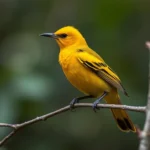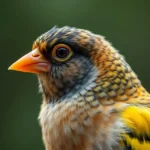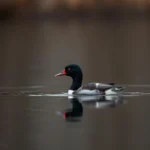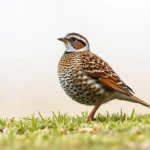The Pied-Billed Grebe: A Symbol of Adaptability and Transformation
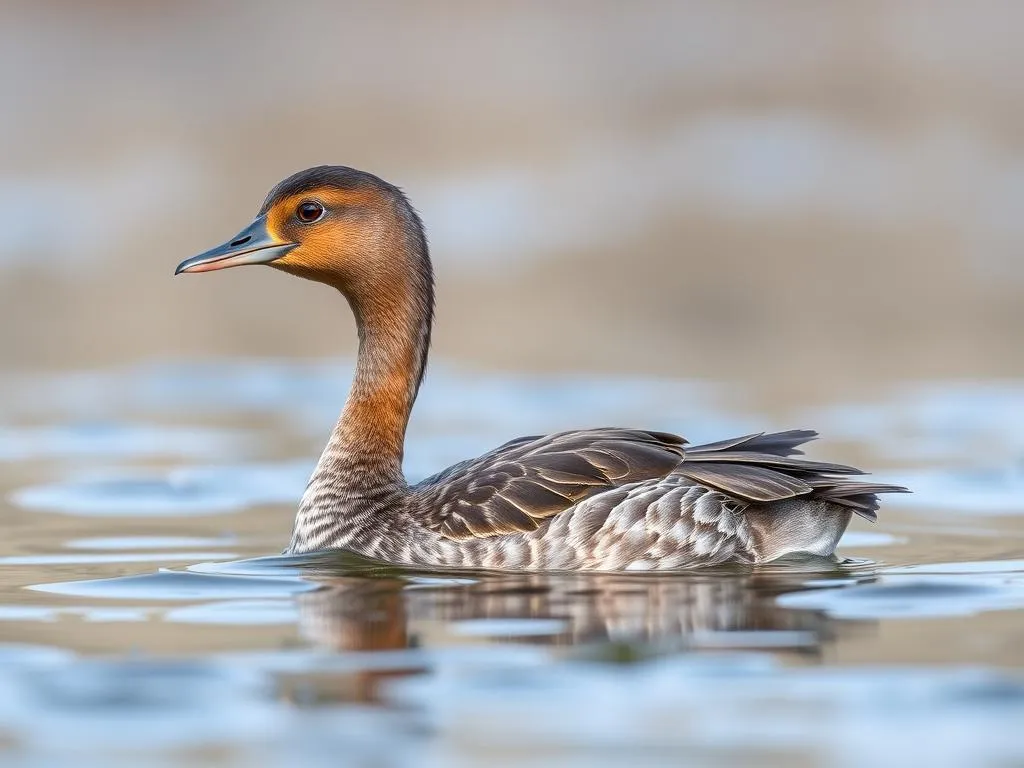
Disclaimer: Some images on this website are AI-generated artworks and may not accurately represent real animals.
The pied-billed grebe is a fascinating bird that embodies deep symbolism and meaning, particularly around themes of adaptability and transformation. As we explore the characteristics, behaviors, and cultural significance of this remarkable creature, we can gain valuable insights into our own lives and the journeys we undertake.
Understanding the Pied-Billed Grebe
Physical Characteristics
The pied-billed grebe is known for its striking appearance and unique physical attributes. Below is a table summarizing its key features:
| Feature | Description |
|---|---|
| Size | 12 to 16 inches in length |
| Weight | Approximately 1.5 to 2.5 pounds |
| Bill | Short, stout, and often appears darker in breeding season |
| Plumage | Brownish-gray with a distinctive black, rounded head |
| Legs | Positioned far back on the body for efficient swimming |
| Feet | Lobed toes that aid in propulsion through water |
The pied-billed grebe is primarily found in freshwater marshes, ponds, and lakes across North America. From the marshlands of Canada to the southern U.S. wetlands, these birds thrive in diverse habitats, showcasing their adaptability.
Behavior and Lifestyle
The behavior of the pied-billed grebe further illustrates its resourcefulness. These birds are skilled divers, utilizing their agility to hunt for a varied diet primarily consisting of fish, amphibians, and aquatic invertebrates. They often dive beneath the surface, using their lobed feet to propel themselves while searching for food.
During the breeding season, the grebe constructs floating nests made of aquatic vegetation, providing a safe haven for their young. Both parents share the responsibility of caring for their chicks, demonstrating a commitment to family and nurturing.
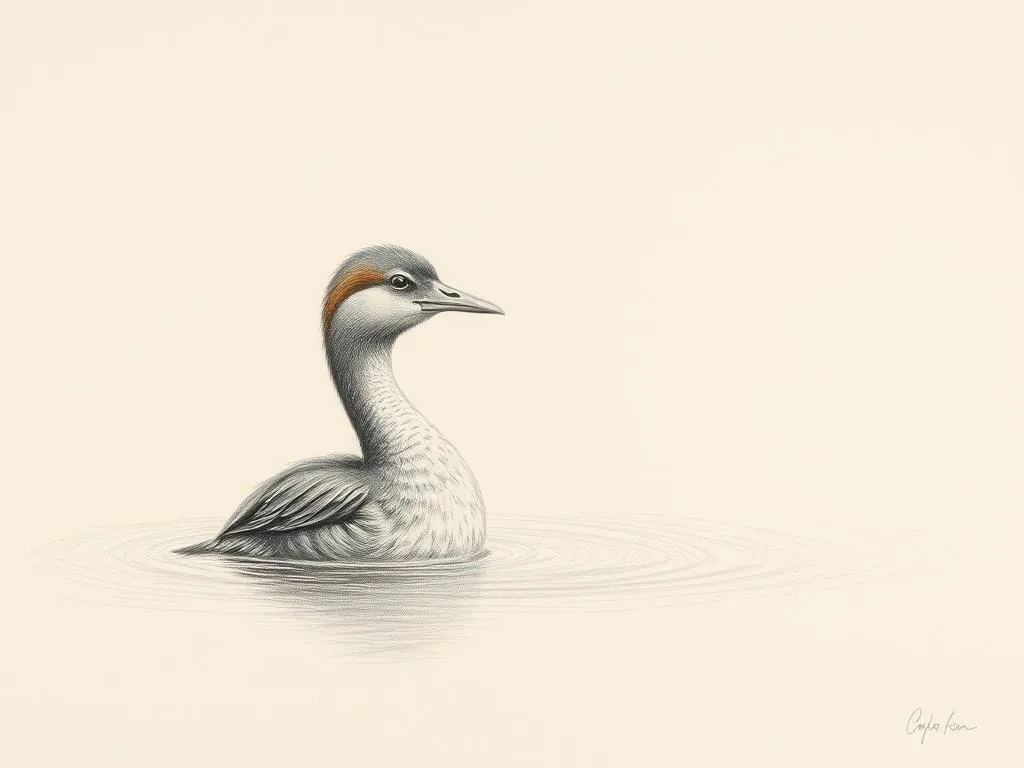
Symbolism & Spiritual Meaning
Adaptability and Resourcefulness
The pied-billed grebe is a powerful symbol of adaptability. Its ability to thrive in different environments, from shallow marshes to deep lakes, reflects the need for flexibility in our own lives. Just as the grebe adjusts its behavior and habitat to suit its needs, we too can learn to navigate life’s challenges by embracing change.
Transformation and Change
The lifecycle of the pied-billed grebe serves as a metaphor for transformation. From the moment they hatch as vulnerable chicks to their development into independent adults, these birds undergo significant changes. This transformation can inspire us to reflect on our personal growth, encouraging us to embrace the changes we face and harness them to achieve our full potential.
Introspection and Reflection
The solitary nature of the pied-billed grebe allows for moments of introspection and self-reflection. Often seen gliding quietly on the water’s surface, these birds invite us to take a step back and connect with our inner selves. In a fast-paced world, the grebe reminds us of the importance of solitude and contemplation in our journey toward self-discovery.
Pied-Billed Grebe in Dreams
Interpreting Grebe Sightings in Dreams
Dreaming of a pied-billed grebe can carry significant meanings. Such dreams often symbolize the need for adaptability in waking life. The grebe’s presence may suggest that you are at a crossroads where flexibility and resourcefulness are needed.
Common Dream Scenarios
Here’s a table summarizing common scenarios involving the pied-billed grebe in dreams and their symbolic implications:
| Dream Scenario | Symbolic Meaning |
|---|---|
| Flying Grebe | Embracing freedom and personal growth |
| Swimming Grebe | Navigating emotions and finding inner peace |
| Nesting Grebe | Nurturing relationships and family connections |
| Grebe in Trouble | Facing challenges and the need for adaptability |
These dream interpretations emphasize the importance of embracing change and remaining open to new experiences, much like the pied-billed grebe itself.
Cultural Significance and Folklore
Indigenous Perspectives
The pied-billed grebe holds significance in various indigenous cultures. Native American tribes often view the grebe as a symbol of adaptability and survival. Its ability to thrive in challenging environments is celebrated, as it mirrors the resilience of indigenous peoples in preserving their cultures and traditions.
Symbolism in Literature and Art
In literature and art, the pied-billed grebe has been depicted as a representation of tranquility and introspection. Artists often capture its serene presence on the water, symbolizing peace and the beauty of nature. Poets have used the grebe as a metaphor for life’s quiet moments and the importance of reflection amidst chaos.
Modern Interpretations
Conservation and Environmental Awareness
In contemporary society, the pied-billed grebe serves as an important indicator species for wetland health. As a part of our ecosystem, its presence signals the overall well-being of aquatic environments. Conservation efforts aimed at preserving wetlands are essential for maintaining biodiversity, and the grebe’s survival can inspire us to take action in protecting our planet.
Personal Growth in Contemporary Life
The symbolism of the pied-billed grebe can be particularly relevant in modern life. As we face rapid changes in technology, society, and personal circumstances, the lessons of adaptability and transformation become increasingly important. Embracing these qualities can lead to personal growth and development, helping us navigate the complexities of contemporary living.
Key Takeaways
- Adaptability: The pied-billed grebe exemplifies the importance of being flexible and resourceful in various environments.
- Transformation: Its lifecycle serves as a powerful metaphor for personal growth and embracing change.
- Introspection: The solitary nature of the grebe encourages self-reflection and inner discovery.
- Cultural Significance: The grebe holds a respected place in indigenous cultures and artistic representations.
- Conservation: The grebe’s health reflects our environmental responsibilities and the need for conservation efforts.
Conclusion
In conclusion, the pied-billed grebe is more than just a bird; it is a symbol of adaptability, transformation, and introspection. By embracing the lessons it offers, we can navigate the complexities of our lives with grace and resilience. As we reflect on the significance of the pied-billed grebe, let us welcome change and seek personal growth, drawing inspiration from this remarkable creature’s journey through life.
